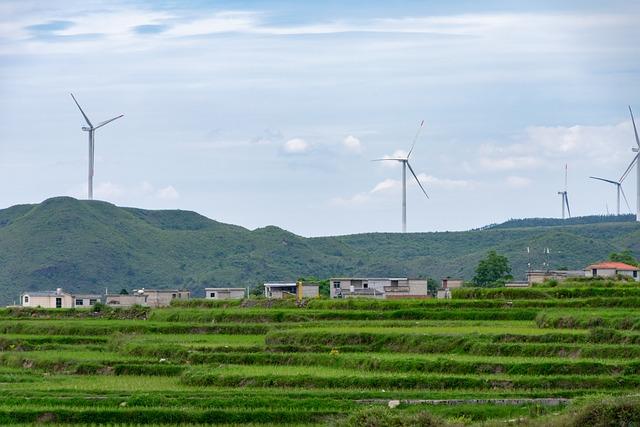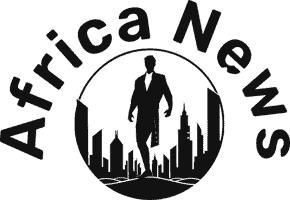within the evolving panorama of global support, the position of organizations like USAID has lengthy been pivotal in shaping construction results throughout Africa. On the other hand, as investment mechanisms shift adn new partnerships emerge, the continent faces a essential juncture: how you can maintain and construct upon the strides made in construction, training, and healthcare with out the longstanding make stronger of standard support constructions. This text delves into the consequences of a post-USAID technology in Africa, analyzing the demanding situations and alternatives that get up as international locations search to carve their very own paths in opposition to sustainable expansion. Thru an research of present methods, leading edge answers, and the voices of native leaders, we discover the way forward for African construction in an international the place self-reliance and localized funding might redefine good fortune within the quest for development.
The Have an effect on of USAID’s Withdrawal on African construction Tasks
The withdrawal of USAID marks an important turning level for a lot of construction projects throughout Africa. Historically, USAID has performed a the most important position in financing and supporting initiatives aimed toward bettering instructional get right of entry to, healthcare techniques, and infrastructure development. As quite a lot of nations get ready for a post-USAID panorama, they will have to now discover leading edge investment mechanisms and partnerships to maintain development and navigate attainable setbacks. This shift might compel African international locations to leverage native sources and search possibility global collaborations that align with their construction objectives.
Within the face of this transition, a number of key spaces call for center of attention to mitigate the affect of USAID’s absence:
- Native Capability Development: Strengthening indigenous organizations to make sure sustainability and continuity of construction initiatives.
- Public-private Partnerships: Encouraging collaboration between govt entities and personal sector avid gamers to pool sources and foster innovation.
- Larger Funding in Era: Using virtual platforms to fortify training and healthcare supply, and to facilitate network engagement.
Additionally, the possibility of new investment streams from philanthropies and affect traders is at the horizon.African nations will want to adapt briefly and strategically, most likely even fostering a fashion of self-reliance that empowers native communities to guide their construction agendas.
Exploring Alternatives for Sustainable Schooling Techniques Publish-USAID

The transition from dependence on USAID items a pivotal second for Africa’s training techniques, paving the way in which for leading edge, locally-driven answers. As nations start to chart their very own instructional futures, a number of key alternatives emerge:
- Public-Non-public Partnerships: Encouraging collaboration between governments and personal entities can result in extra sustainable instructional fashions.
- Neighborhood Engagement: Involving native communities in decision-making processes guarantees that instructional projects are adapted to satisfy the particular wishes of scholars.
- Era Integration: The implementation of virtual equipment now not handiest complements studying stories but additionally bridges the space in useful resource availability.
Additionally, sustainable training techniques will necessitate a focal point on inclusive practices that deal with quite a lot of demanding situations dealing with marginalized teams. To optimize useful resource allocation beneath those new frameworks, instructional stakeholders will have to believe growing a whole useful resource matrix that outlines efficient methods along side their expected affects:
| Technique | Have an effect on | Implementation Time frame |
|---|---|---|
| Instructor Coaching Techniques | Advanced Instructing High quality | 1-2 Years |
| Infrastructure Building | Enhanced Finding out Atmosphere | 3-5 Years |
| Curriculum Overhaul | Relevance to Native context | 2-3 Years |
Inventions in Well being Care Supply amidst Converting Investment Landscapes

Within the wake of evolving investment situations, healthcare supply in Africa has noticed a surge of leading edge approaches aiming at improving accessibility and potency. With conventional resources like USAID dealing with changes of their operational frameworks, many native entities are turning to technology-driven answers. Telemedicine, for example, has develop into a very important instrument in bridging the space between healthcare suppliers and sufferers, particularly in far off spaces. Cellular well being packages don’t seem to be handiest facilitating well being details dissemination but additionally enabling real-time tracking of sufferers’ well being statuses.The emphasis is transferring towards community-driven fashions, which prioritize affected person engagement and empowerment, making sure that services and products resonate extra carefully with the wishes of native populations.
Moreover, partnerships between public well being establishments and private tech firms are paving the way in which for sustainable healthcare answers. Those collaborations ceaselessly center of attention on growing information analytics platforms that harness information for higher well being results and useful resource allocation. The transition to those fashions can also be quantified thru the next desk, highlighting the shift in investment allocations and the corresponding affect on healthcare supply inventions:
| Investment supply | Funding Center of attention | End result |
|---|---|---|
| Conventional Donors | Infrastructure Building | Inconsistent Get entry to |
| Non-public Sector Partnerships | Tech-Pushed Answers | Advanced Provider Supply |
| Neighborhood Tasks | Affected person-Centric Fashions | Upper Engagement Charges |
Strengthening Native Governance for Enhanced Building Results

Native governance performs a pivotal position in shaping the developmental panorama in Africa, specifically within the wake of diminishing exterior investment from organizations like USAID.Through that specialize in improving the capability and duty of native govt constructions, we will be sure that sources are successfully allotted and applied. Strengthening native governance can result in improved service delivery throughout quite a lot of sectors, together with training and healthcare, thereby fostering sustainable expansion. Key parts to prioritize come with:
- Decentralization: Empowering native government to make choices that highest serve their communities.
- Neighborhood Engagement: Involving voters in governance processes to make sure transparency and responsiveness.
- Capability Development: Coaching native officers to improve their abilities in control, finance, and repair supply.
Additionally, efficient native governance techniques can advertise inclusive construction, making sure that marginalized teams reminiscent of ladies and formative years actively take part in decision-making processes. Through fostering partnerships between the general public sector, civil society, and personal stakeholders, native governments can create platforms for collaboration that magnify their developmental affect. Tasks might come with:
| Initiative | Description |
|---|---|
| Public-Non-public Partnerships | Participating with companies to fortify infrastructure and services and products. |
| Neighborhood Building Techniques | Localized initiatives aimed toward empowering citizens and bettering livelihoods. |
| Knowledge-Pushed Determination Making | Using information analytics to steer insurance policies and useful resource allocation successfully. |
Collaborative Methods for Attractive Non-public Sector Funding in Africa

Attractive the personal sector in Africa’s financial panorama calls for leading edge collaborative methods that leverage the strengths of a couple of stakeholders. One efficient way is fostering Public-Non-public Partnerships (PPPs) that align buisness targets with nationwide construction objectives. Those partnerships facilitate the sharing of sources, experience, and threat, thereby making sure that investments don’t seem to be handiest winning but additionally give a contribution to essential sectors reminiscent of training and healthcare. Additionally, growing incentives for personal funding thru tax breaks or grants can stimulate pastime, particularly in underserved areas the place conventional investment resources are sparse. Attractive native companies as co-investors too can create a multiplier impact,encouraging network involvement and make stronger for construction projects.
Moreover, construction an ecosystem that prioritizes collaboration and knowledge-sharing amongst traders, governments, and NGOs is essential. Tech-driven platforms can facilitate this interplay, offering an area for sharing good fortune tales, highest practices, and courses discovered. Common boards and workshops can also be hired to glue stakeholders and stay the discussion open. Setting up metrics for good fortune may be the most important; those can come with affect exams and network comments, making sure that investments yield tangible social advantages.Beneath is a desk summarizing some efficient methods and their attainable affects:
| Technique | Doable Have an effect on |
|---|---|
| Public-Non-public Partnerships (PPPs) | Enhanced useful resource allocation and risk-sharing |
| incentives for Funding | Larger funding in underdeveloped spaces |
| Wisdom Sharing Platforms | Advanced collaboration and innovation throughout sectors |
| Have an effect on metrics Building | Responsible and clear funding results |
Long run Pathways: Development Resilience and self-Sufficiency in African Communities

The sustainability of African communities hinges on fostering resilience and selling self-sufficiency within the wake of decreased global make stronger, reminiscent of the predicted aid of USAID’s involvement. Neighborhood-driven projects can successfully deal with native wishes and harness sources that empower people. some key methods come with:
- strengthening local governance: Empowering network leaders and stakeholders to make choices that resonate with native priorities complements duty and useful resource allocation.
- Making an investment in training: Equipping the formative years with abilities pertinent to their communities fosters entrepreneurship and innovation, paving the way in which for financial expansion.
- Encouraging sustainable agriculture: Imposing agroecological practices can fortify meals safety and resilience in opposition to climate-related demanding situations.
Additionally,organising partnerships between native organizations and personal sectors will assist boost up get right of entry to to basic services and products reminiscent of well being care and training. Those collaborative efforts can result in leading edge answers reminiscent of:
| Technique | Anticipated End result |
|---|---|
| Telehealth techniques | Larger get right of entry to to clinical services and products in far off spaces. |
| Vocational Coaching facilities | Enhanced task readiness and decreased unemployment charges. |
| Microfinance Tasks | Improve for native companies and entrepreneurship. |
Through prioritizing native answers and fostering self-reliance, African communities can shift in opposition to a extra sustainable long run, whilst conventional international support diminishes.
To Conclude
As we conclude this research of the evolving panorama of construction, training, and healthcare in Africa following the withdrawal of USAID investment, it’s transparent that the continent stands at a essential juncture. Whilst the departure of an important monetary pillar poses demanding situations, it additionally items distinctive alternatives for innovation and native empowerment.
African international locations are more and more turning to homegrown answers, diversifying their investment resources, and fostering collaborative partnerships that carry in combination governments, non-profits, and the personal sector. This shift emphasizes the significance of sustainable, context-specific approaches that resonate with native wishes and aspirations.
Additionally, as the worldwide network watches carefully, the point of interest on self-reliance and resilience is extra essential than ever. The continuing dedication to training, well being, and socio-economic construction would require now not handiest strategic making plans but additionally an inclusive discussion that engages all stakeholders.
In the end, the way forward for Africa’s construction, post-USAID, will probably be outlined now not through the absence of exterior support, however through the energy of its inside capacities and the collective will of its folks. Through championing native management and fostering sustainable practices, the continent can pave the way in which for a brighter, extra equitable long run. As we proceed to watch this dynamic panorama, it is very important to stay hopeful and knowledgeable, able to make stronger and have a good time the strides made alongside this transformative adventure.
Source link : https://afric.news/2025/03/27/analysis-life-after-usaid-africas-development-education-and-health-care-nextbillion/
Creator : Mia Garcia
Put up date : 2025-03-27 07:43:00
Copyright for syndicated content material belongs to the connected Source.



